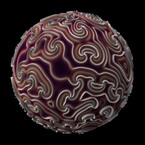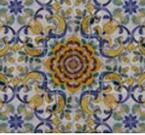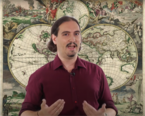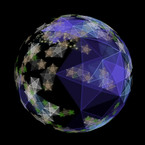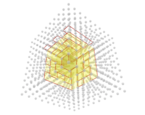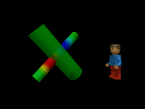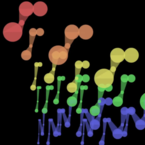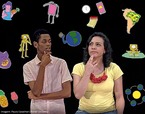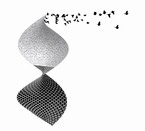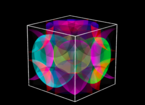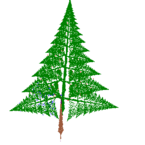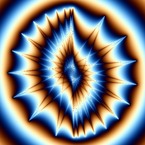Around the world in …N fractals for Mathlapse!
película
Licencia
Créditos
- Idealization and Programming - Video director
- Animation and Visual Effects
Mathlapse Competition 2016. Imaginary Conference Berlin 22/07/2016.
The video was selected for screening at the award ceremony.
In it we wander around the world using fractal geometry. A fractal is mathematical set that exhibits a repeating pattern that displays at every scale. We connect some fractal figures to the symbols of some countries. We use Iterated Function System (IFS) fractals to represent the Eiffel Tower in Paris, the temples in Bagan, the Cathedral in Prague, Cathedral in Milan and so on. The video was created during a mathematical activity in the classroom with my students in Liceo Scientifico “L. Siciliani” in Catanzaro Italy.
We would like that our video can be a symbol of peace and friendship in the world in the name of Mathematics.
Introduction
Digital technologies are impacting all aspects of personal, social and professional life now, spreading out at an incredible speed. We should take into account all these changes also in the teaching and learning processes of mathematics, taking on new challenges and responsibilities. It is necessary that the new technologies (ICT) have a relevant role in the classroom to improve the educational approach to mathematics. The video “Around the world in …N fractals for MathLapse!” could be an expression of this new educational approach, where theoretical content is combined and modified through multimedia tools. The video includes the following mathematical contents: affine transformations, some well-known fractals, matrices.
The context
My school Liceo Scientifico “L. Siciliani” in Catanzaro (Italy) is a place where you can experiment with new ways of teaching and learning mathematics with students. In fact, in the last eight years, the Liceo has been participating with a pool of teachers (me included) in a national project, called Matematica & Realtà (M&R), managed by the department of mathematics at the University of Perugia. The project deals with making proposals to develop innovative and educational relationships between mathematics and the real world.
M&R proposes a new approach to mathematics education; the mathematical models are, in fact, the central focus of the project. It includes some different activities: mathematical modelling and the best maths presentation competitions.
The main actions of the project are mathematical laboratories, organized in each school taking part in the projects, where the teacher proposes different themes, related to M&R, depending on the age of the pupils and the compulsory mathematical contents. For instance:
1. Linear mathematical models of reality (for 15-16 years old students);
2. Iterative functions and fractal geometry (for 16-17 years old students);
3. Nonlinear mathematical (exponential and trigonometric) models of reality (for 17-18 years old students).
My Maths Laboratory
My mathematical laboratory regards geometry, in particular fractal geometry, geometric properties of fractal figures and affine transformations. The laboratory requires 20 hours (two hours per week in a single lesson) and it is an extra-time activity. Students attend the course as volunteers, they want to be involved in different educational methods about geometry.
The activities, during the laboratory, are divided into two parts:
a) The presentation of geometric content
- Iterative processes on geometrical figures;
- Processes on figures generated by geometrical transformations;
- Geometrical transformations and matrices;
- Affine transformations, isometries, composition of geometrical transformations;
- Well-known fractals as: Koch’ fractal, Sierpinski’ gasket, Barnsley’ cathedral;
- Genetic code of a fractals;
- Dimension of a fractals.
b) The final group-works
Some group of students design and create the multimedia objects regarding the mathematical contents, guided by the teacher. They use free software and resources on the web as: Powtoon, Go Animate, Moovly and so on for sound and for images.
The final goal of every group is to take part in “The Best maths presentation competition”, that is held every year at the University in Perugia.
The video “Around the world in… N fractals!” was presented in the competition last April.
“Around the world in… N fractals!”
Idea
During the activities in maths laboratory, for including Martina, a student with Italian, English, Czech origins, we decided to wander around the world through geometry, linking a fractal figure to each foreign country. We chose some countries (France, Italy, Czech Republic …) and connected them to a fractal figures, that in our opinion, could better represent those different countries.
Mathematical contents
We studied the fractal codes and the affine transformations. In one case, we changed the fractal codes to generate a new figure for example the fractal for the temples in Bagan.
In our video we use two different forms to indicate the codes of IFS fractals:
a) in equation form
b) in matrix form
The codes of every analised fractals have been written as matrices or affine transformations. In the matrices the numbers of the rows represent the numbers of affine trasformation in the following way:
If the affine transformation is:
x’=ax+by+c
y’=dx+ey+f
in the matrix, the row is: a b d e c f
Multimedia Tools
We used the following resource on the web:
a) Moovly is a free browser-based platform and does not require any installation, it combines visuals, sounds, voice and video in clear explanations or engaging stories. We used it to create the video.
b) IFS Construction Kit by Larry Riddle was used to design and draw fractals based on iterated function systems.This software may be freely used. Copyright is maintained by Larry Riddle.
c) Audacity® is a free, open source, cross-platform software for recording and editing sounds.
d) Paint.NET is free image and photo editing software for computers that run Windows
Methodology in group- works
After some theoretical lessons about fractal geometry, I used flipped classroom technique to work with the specific group. In particular, in the group of “Around the world..” Martina and Giovanni studied fractals and created many fractals images by using different software and Mariarosaria used Moovly to create the video.
The mathematics aims
During the lessons the most important mathematical aims are:
For students
- Improving the study of geometrical transformations;
- Building known fractals (Sierpinski gasket, cathedral of Barnesley…) identifying the geometrical transformations and their codes;
- Making conjectures and individual simulations to create new fractals, for stimulating their creativity through the geometry;
- Learning to model the real world using affine transformations as models;
- Using new technologies to improve the knowledge of mathematical contents.
For teacher
- Developing a mathematics education opened to the external world, remaining anchored to the epistemology of the discipline;
- Giving students more autonomy in geometric knowledge;
- Using new technologies to better address the specific needs students may have;
- Involving students in a new educational approach to geometry
Conclusion
This educational activity is based on an inclusive approach between students and the mathematical contents. It is necessary to stimulate their curiosity, to foster their development of logical skills and attitudes, to support them in their educational and emotional weakness, to increase their sense of self-confidence.
It is also an activity to encourage the respect of the differences under a common denominator: making Mathematics together.
ANNA ALFIERI


